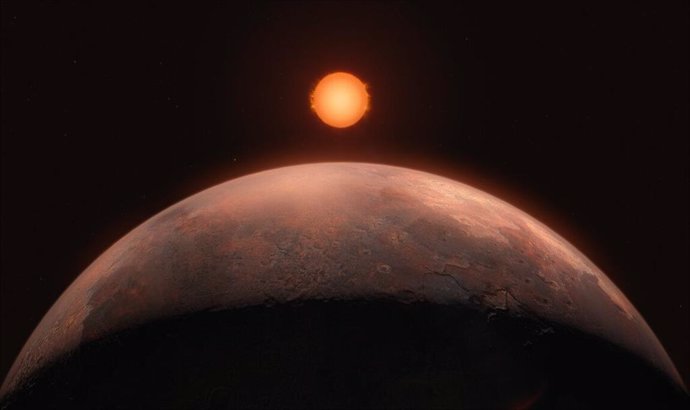Artist’s illustration of Barnard’s star – THAT
Oct. 1 () –
Using the Very Large Telescope (VLT), astronomers have discovered an exoplanet orbiting very close to Barnard’s Star, the closest individual star to our Sun.
With at least half the mass of Venus, a year on that planet lasts just over three Earth days. The team’s observations also indicate the possible existence of three other exoplanet candidates in various orbits around the star.
Located just six light years away, Barnard’s Star is the second closest star system, after the group of three stars of Alpha Centauriand the single star closest to us. Due to its proximity, it is a prime target in the search for Earth-like exoplanets. Despite a promising detection that took place in 2018, Until now, no planet had been confirmed orbiting Barnard’s Star.
The discovery of this new exoplanet, announced in an article published in the journal Astronomy & Astrophysics, is the result of observations made over the last five years with ESO’s VLT, located at the Paranal Observatory, in Chile.
“Even if it took us a long time, We were always sure we could find something,” declares Jonay González Hernández, researcher at the Institute of Astrophysics of the Canary Islands and main author of the article.
The team was looking for signs of possible exoplanets within Barnard’s Star’s habitable, or temperate, zone, the range where liquid water can exist on the planet’s surface. Often, the astronomical community focuses on the study of red dwarfs (such as Barnard’s Star) because low-mass rocky planets are easier to detect in their environment, something more complex to do if we are talking about larger stars, similar to the Sun.
TWENTY TIMES CLOSER THAN MERCURY TO THE SUN
Barnard b, as the newly discovered exoplanet is called, is twenty times closer to Barnard’s star than Mercury is to the Sun. It orbits its star in 3.15 Earth days and has a surface temperature of around 125 °C.
“Barnard b is one of the lowest mass exoplanets known and one of the few known with a mass less than that of the Earth. But the planet is too close to the host star, closer than the habitable zone,” he explains. in a statement Gonzalez Hernandez. “Even if the star is about 2,500 degrees cooler than our Sun, it is too hot to maintain liquid water on the planet’s surface.”
In addition to the confirmed planet, the international team also found indications of the presence of three other exoplanet candidates orbiting the same star. “Now we have to continue observing this star to confirm the other signs of possible candidates“says Alejandro Suárez Mascareño, also a researcher at the Institute of Astrophysics of the Canary Islands and co-author of the study.













![[Img #74683]](https://thelatestnews.world/wp-content/uploads/2024/12/The-main-mistakes-to-avoid-when-betting-on-electronic-sports-300x200.jpg)
Add Comment